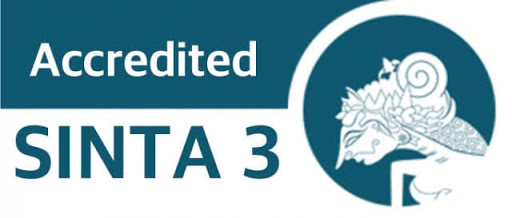THE POTENTIAL OF AUGMENTED REALITY TO TRANSFORM EDUCATION INTO SMART EDUCATION
Abstract
The paper used as a review material for this paper is "The Potential of Augmented Reality to Transform Education into Smart Education" by Gabriela Kiryakova, et al. published by TEM Journal Vol. 7 in 2018. In general, the paper reviewed the role of education in modern society that seeked to make life smarter in ordered to face the changing challenges of the world and strived to prepare students to become members of the community that were fully integrated with the living environment and technological developments. Smart education is an education system based on smart devices and smart technologies such as cloud computing, big data, and others. In an effort to implement smart education, augmented reality was implied. The specific purpose of the paper was to reveal the potential of augmented reality to transform traditional education into smart education. Augmented reality is considered as one of the technologies that can change learning significantly. In addition, the most important advantage of augmented reality compared to virtual reality is overcoming the risk of social isolation and lack of social skills and communication among users.
Keywords
Full Text:
PDFReferences
Jusoh, W., Hazlina, W. N., and Ahmad, S. (2016). Mind Map as an innovative tool in teaching and learning accounting: an exploratory study. Interactive Technology and Smart Education, 13(1), pp.71-82.
Kiryakova, Gabriela, et.al. (2018). The Potential of augmented reality to transform education into smart education. TEM Journal, 7(3), pp. 556-565.
Prensky, M. (2001). “Digital Natives, Digital Immigrants.” On the Horizon, 9(5), pp. 1–6.
Prensky, M. (2010). “Teaching Digital Natives: Partnering for Real Learning”. Corwin, Thousand Oaks, CA.
Skobelev and Borovik. (2017). On The Way from Industry 4.0 to Industry 5.0: from Digital Manufacturing to Digital Society. International scientific journal “industry 4.0”, issue 6, P 307-311.
DOI: http://dx.doi.org/10.33578/pjr.v3i4.7433
Refbacks
- There are currently no refbacks.
Copyright (c) 2019 JURNAL PAJAR (Pendidikan dan Pengajaran)

This work is licensed under a Creative Commons Attribution-NonCommercial-ShareAlike 4.0 International License.
JURNAL PAJAR (Pendidikan dan Pengajaran)
Secretariat
Program Studi Pendidikan Guru Sekolah Dasar
Gedung B1, FKIP Universitas Riau
Kampus Bina Widya Km. 12,5 Simpang Baru Panam
Pekanbaru Riau Indonesia 28293
e-mail : pajar@ejournal.unri.ac.id



